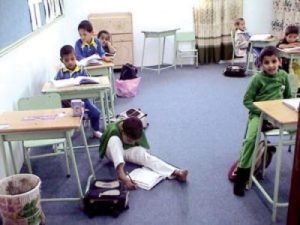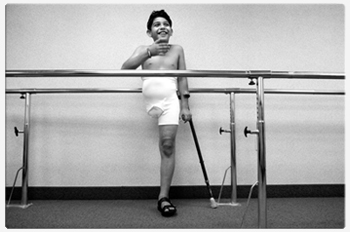Lost mobility usually means a lifetime of poverty and dependence.
Mobility = Survival
The disabled are often the poorest of the poor. Unable to support themselves, amputees and other mobility impaired children and adults often rely on hand-outs and are condemned to lives of neglect. Limbs for Peace is an initiative established to assist amputees with prosthetic rehabilitation. We provide assistance to amputees who would otherwise have no other financial resources to obtain an artificial limb.
Restoring Lives Program is committed to helping the lives of physically disabled people who require artificial limbs and orthopedic braces that have to other options. Providing free fitting of amputee and provide appropriate assistance to disabled people in underdeveloped regions.
Our mission is to advance education and improve community support for amputees of the world’s underserved community.
Restoring Lives Program strives to improve the amputee’s quality of life through access to prosthetic limbs and care that will have been out of their reach.

Restoring Lives Program mission through supports of the center and its efforts to help amputees restore their lives with prostatic limbs that otherwise could not obtain and give an opportunity to people to live a healthy, and productive life with dignity.
Limbs for Peace seeks to ensure that children and adults with limb loss or limb deformities in developing countries have access to high-quality orthopedic and physical rehabilitation services, so that they can enjoy lifelong mobility.
Our Focus at this time is YEMEN due to the devastating high rate of disabilities making it one of the highest in the world.
A recent study in Yemen done by the United Nations Economic and Social Commission for Western Asia (ESCWA) in 2013 has shown that the number of persons with disabilities in Yemen is estimated at approximately 1.2 million in a population of around 23 millions. According to this project, this estimate is rather conservative, and the real estimate is closer to 2 million, but it is unreported. Despite the absence of accurate statistics on the number of disabled people in Yemen, many studies have estimated the proportion of disability in Yemen from 8% to 13% of the total population that is one of the highest ratios in the world.
There are many types of physical impairments including Mobility or orthopedic impairments; Hearing impairments; Blindness and visual impairments; Mental or intellectual impairments; Speech or language impairments; and/or multiple impairments.
The causes of disability could be attributed to several factors, including:
- High rates of traffic accidents, that a senior government official called ‘a factory for disability in Yemen, cause many deaths and serious injuries, many of which end in disability. In 2008, there were 2,822 deaths due to road accidents, as well as 66,641 serious injuries and 80,423 slight injuries18. Some of the reasons for such high rates of road accidents are: the very bad conditions of the roads and cars; the lack of electronic surveillance; the lack of traffic control; the lack of pedestrian crossings; and the lax system of issuing driving licenses.
 Wars, armed conflicts and landmines which occurred in Yemen during the past four decades. Wars in Yemen have left a serious problem of landmines causing death and impairments for what is estimated to be a large number of Yemenis (about 5,470 victims in 2006 only).
Wars, armed conflicts and landmines which occurred in Yemen during the past four decades. Wars in Yemen have left a serious problem of landmines causing death and impairments for what is estimated to be a large number of Yemenis (about 5,470 victims in 2006 only).- Poor health services and Medical mistakes (e.g. infected needles, surgical errors, wrongly prescribed or wrongly used drugs ) also often result in disability.
- Congenital diseases, problems during delivery and complications at birth, communicable diseases such as meningitis, rubella and polio, chronic wounds, diabetes, malnutrition as well as iodine and vitamin A deficiency.
- Accidents in the workplace, in 2008, accidents in the workplace resulted in 106 partial disabilities and 6 total disabilities.
- Accidents at home, especially a very high incidence of burns
